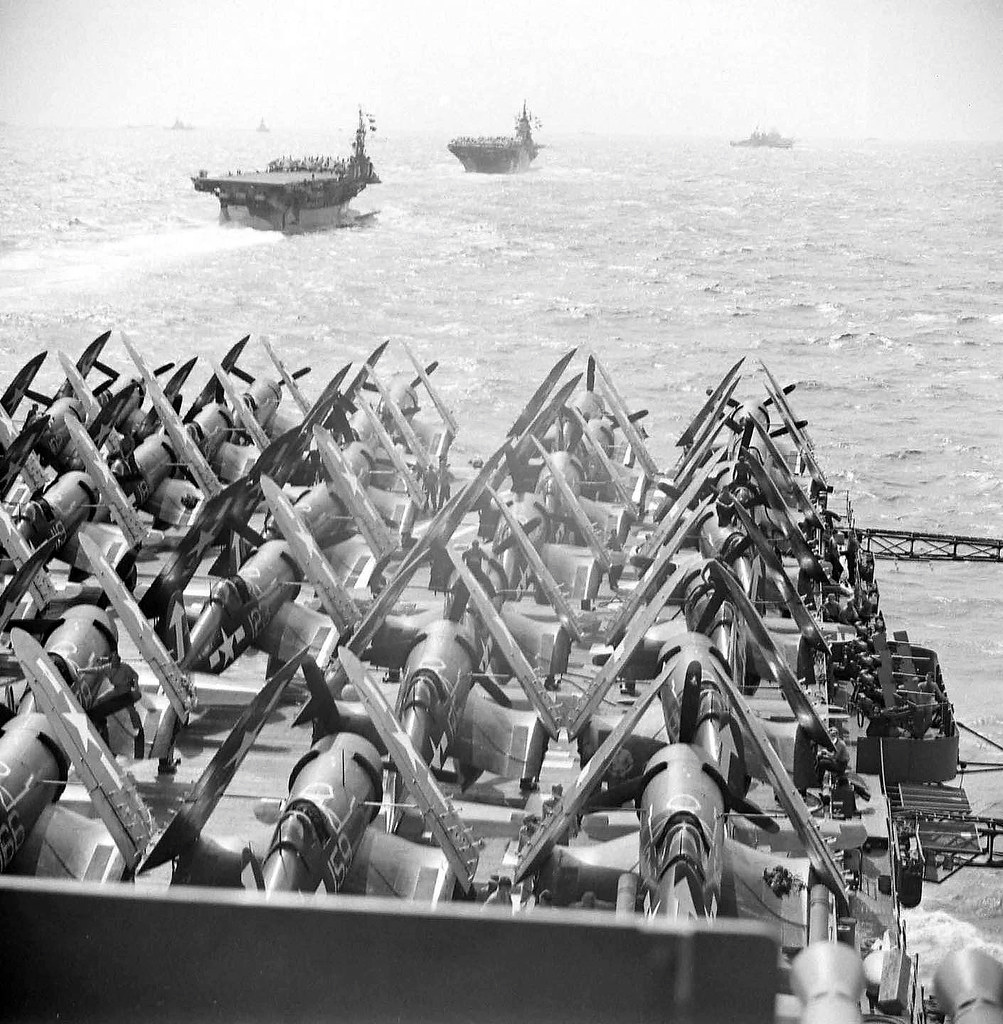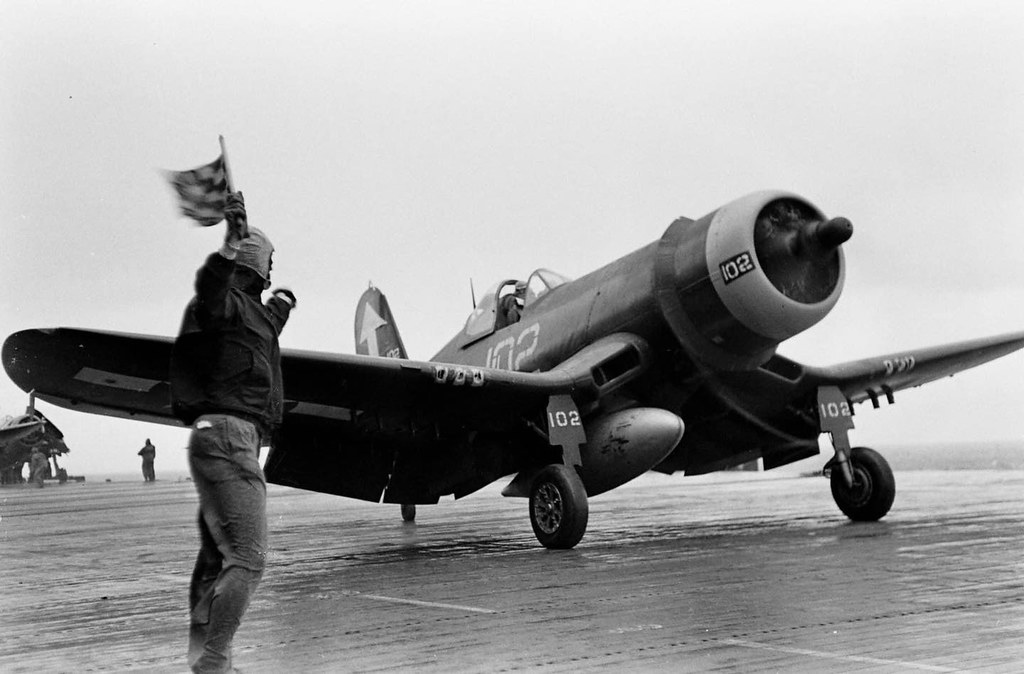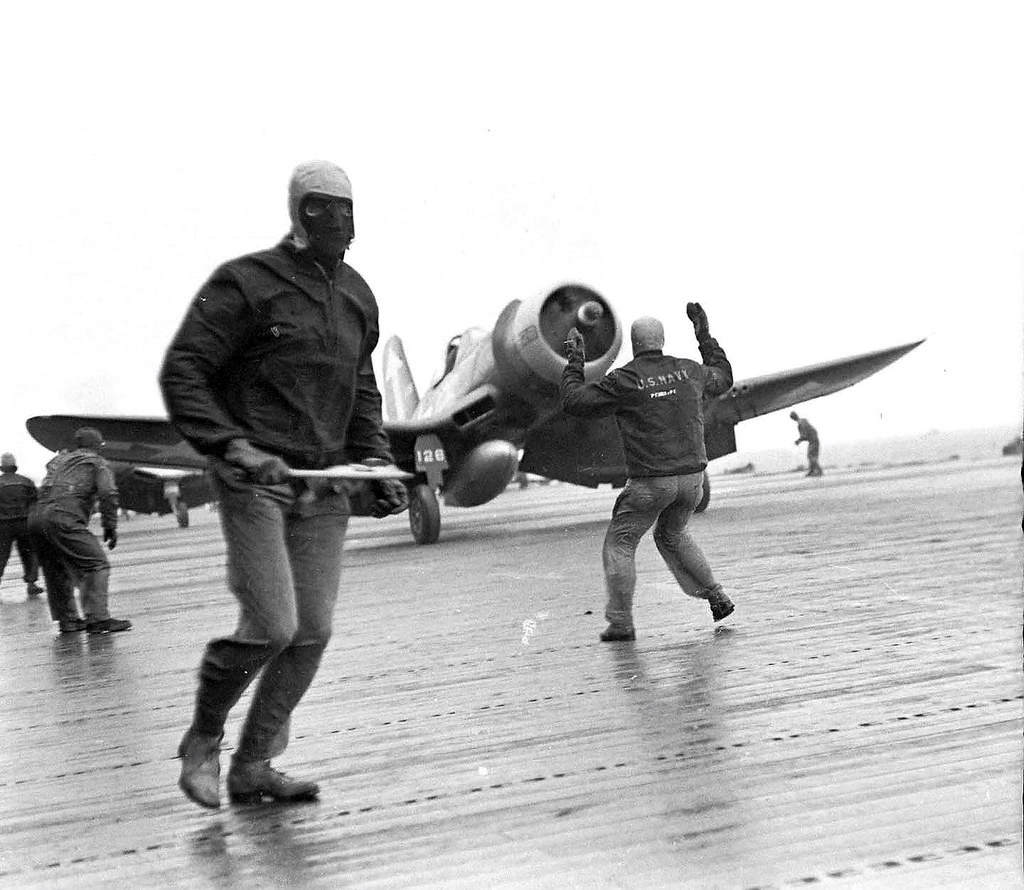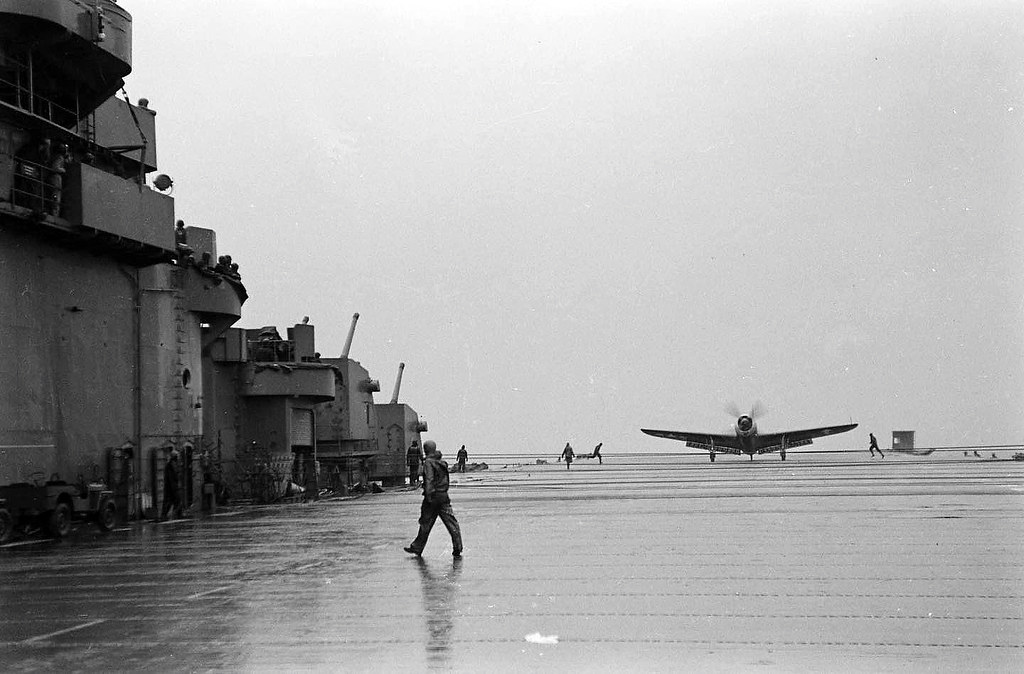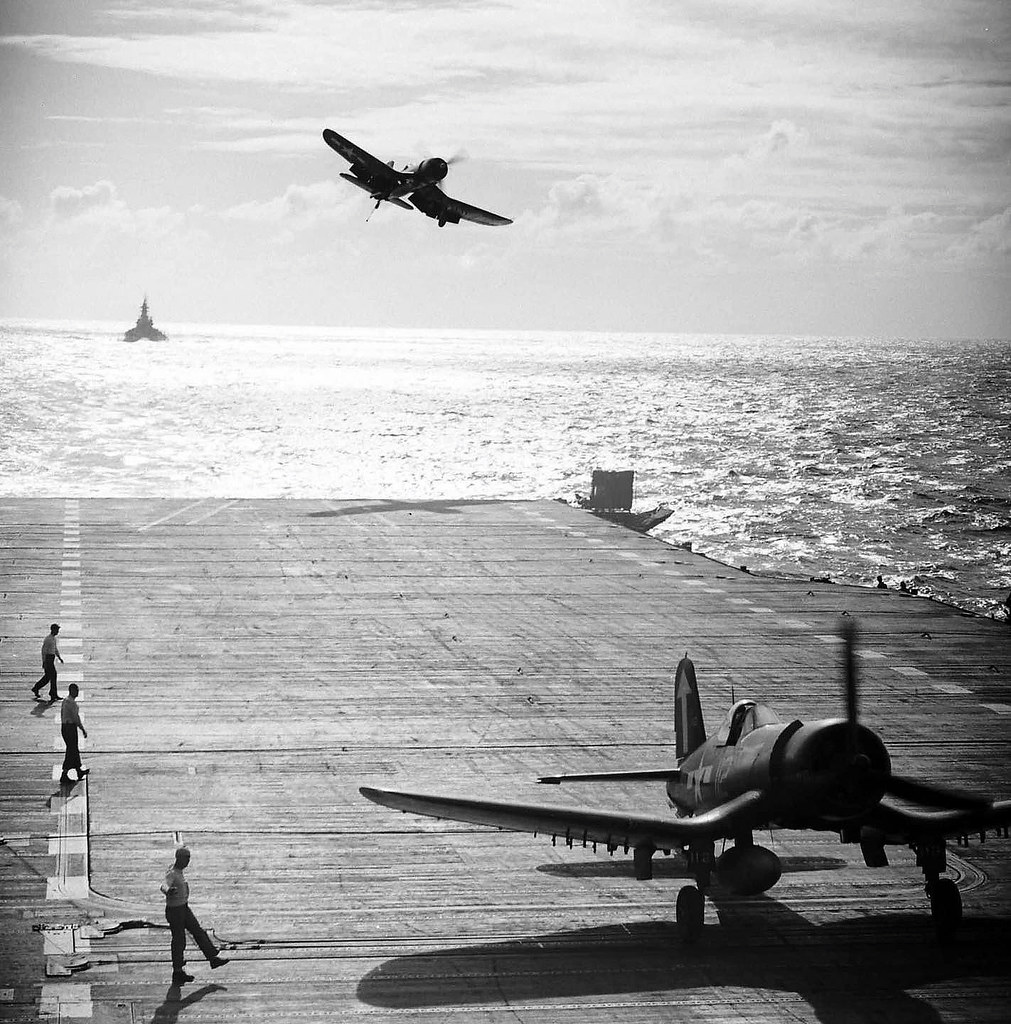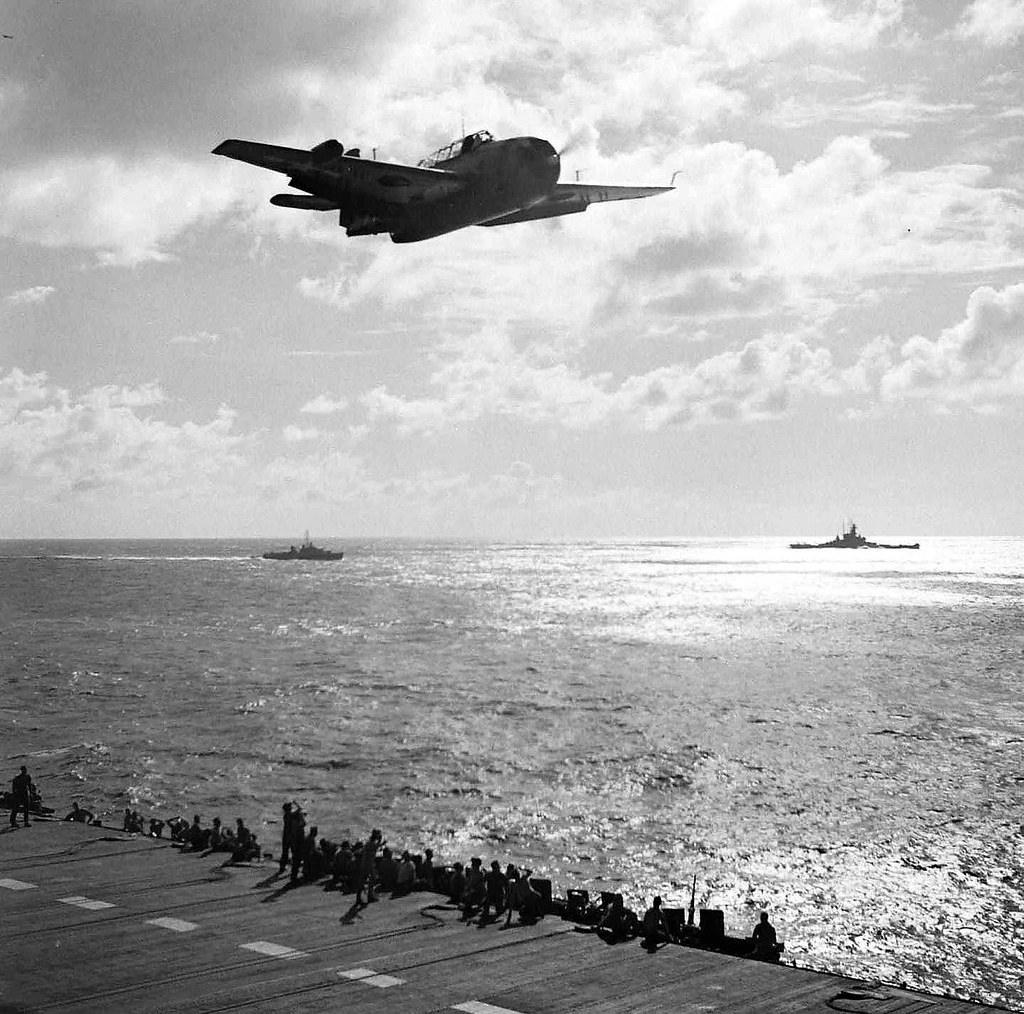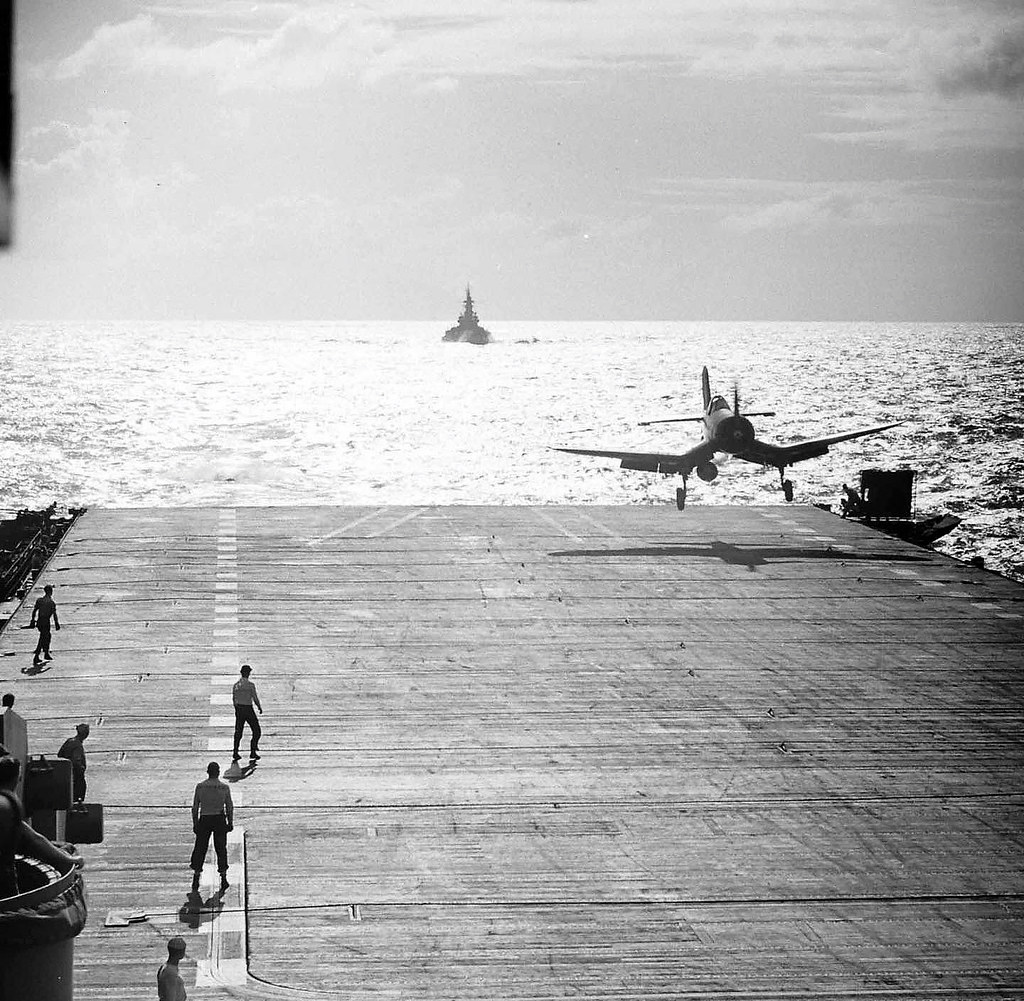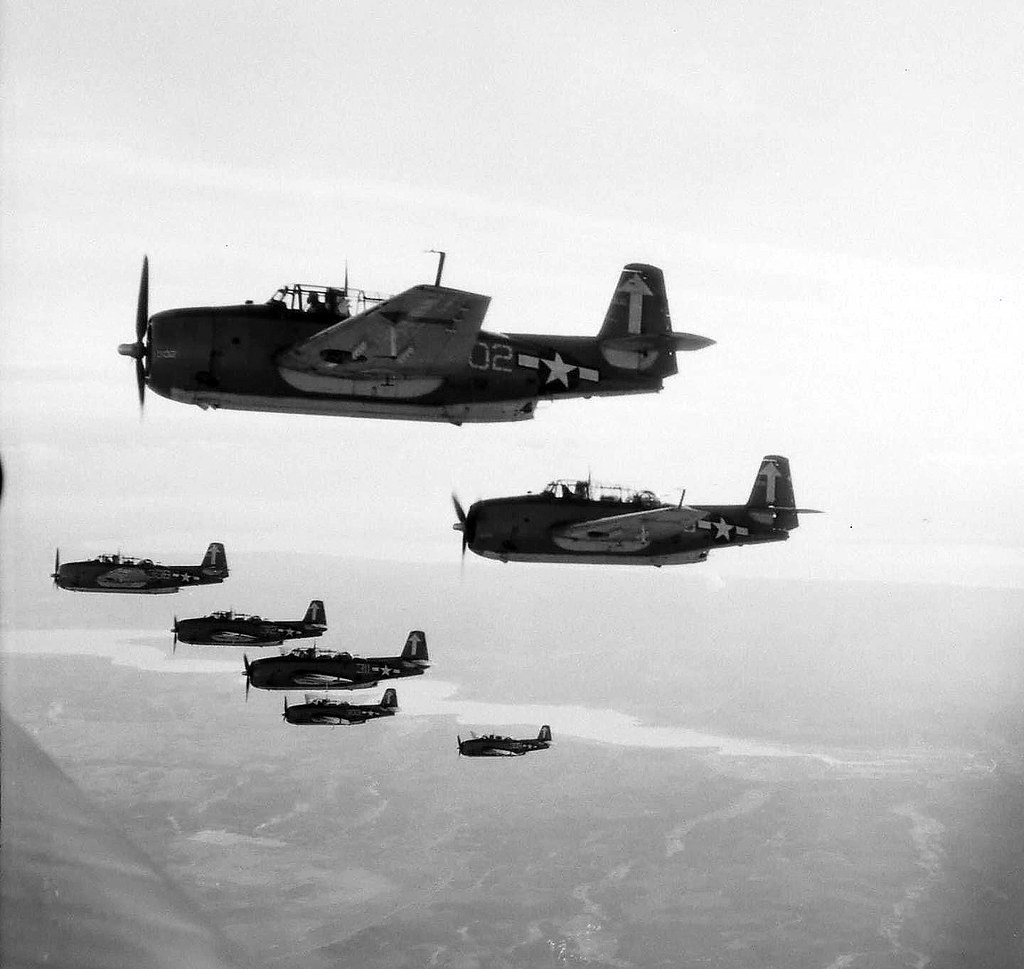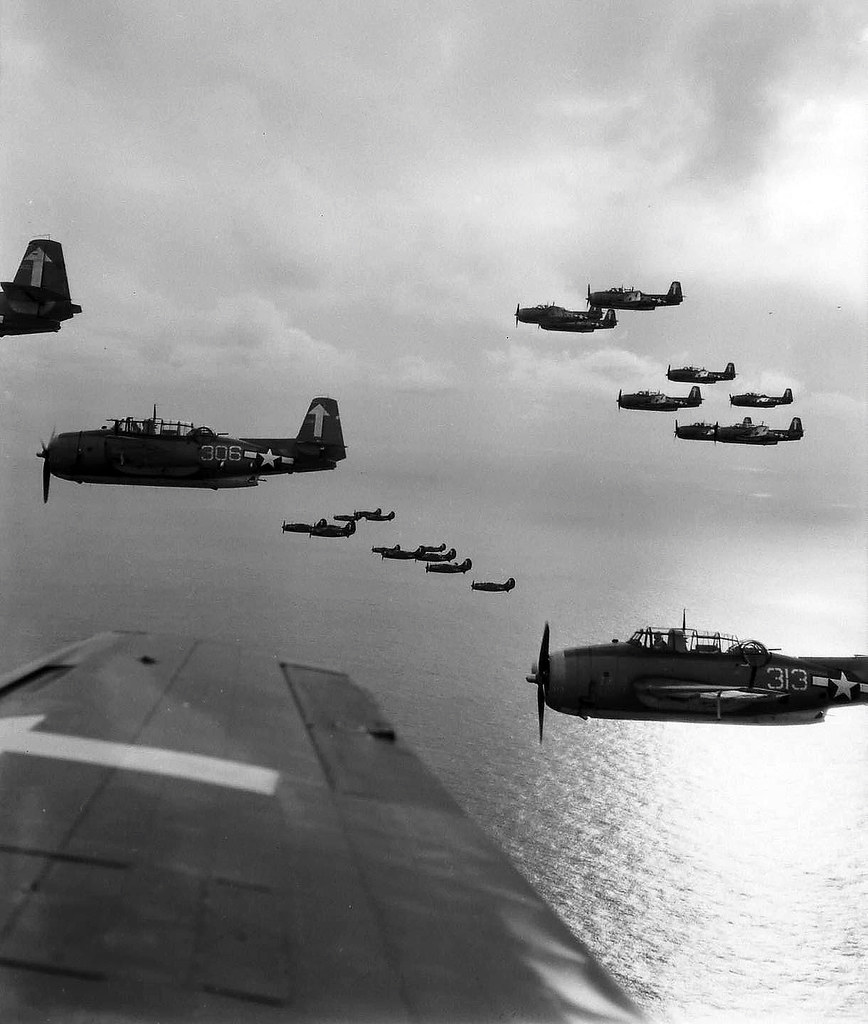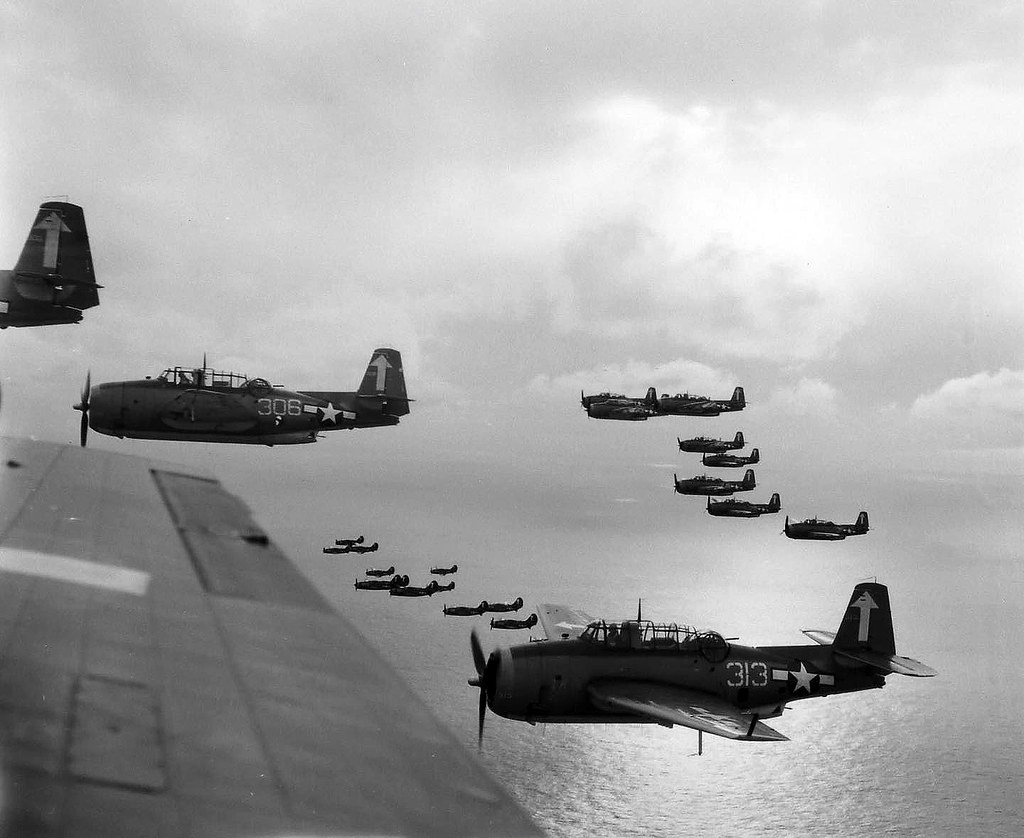USS Bunker Hill CV-17 with Task Group 58.3 - February 16 & 17 1945
With the fighting raging in the Pacific, Bunker Hill wasted no time and steamed to war by way of Pearl Harbor (25–29 January). While the ship moored at Pearl Harbor she loaded the FG-1s of VMF-451 and then (30 January–7 February) turned her prow westward for Ulithi, where the carrier anchored (8–9 February). Bunker Hill joined TG 58.3 as Mitscher sortied TF 58 to launch the first attack by carrier aircraft against Honshū, Japan, in preparation for Operation Detachment—landings by the 4th and 5th Marine Divisions on Iwo Jima. Many of the men involved in the planning viewed the sweep apprehensively. American planes had not flown from carriers against the Japanese home islands since the Halsey-Doolittle Raid in 1942, and more than half of the aircrews lacked combat experience. In addition, the ferocity of the kamikaze attacks influenced reorganizing air groups toward defensive screens so that fleet carriers normally sailed with up to double the number of fighters over dive bombers and torpedo bombers per ship, reducing the strike forces available to task force commanders.
Mitscher broke his flag in command of the five task groups of TF 58 in Bunker Hill. The task force included nine fleet and five small carriers, together with the night-fighting Enterprise and Saratoga of TG 58.5. Consolidated PB4Y-1 Liberators and USAAF Boeing B-29 Superfortresses flying from the Marianas augmented the fighters of the CAP and they together swept the seas ahead of the ships to prevent their discovery. The vessels carried out antiaircraft training during the voyage. Bunker Hill launched day and night CAP for the task force as they struck Tōkyō (16–17 February). Fighter planes from Bunker Hill’s CAP splashed one Betty, and the strike planes strafed and burned aircraft on the ground and hangers. Aircraft attacked two small enemy ships, while a second sweep shot down more enemy planes. A third and fourth sweep brought further destruction upon the Japanese, but also three planes that belonged to Bunker Hill. A fourth sweep smashed the Ota Aircraft Factory. Foul weather over the fleet compelled Mitscher to cancel all but one sweep on the 17th, and that sweep gained positive results concentrating on enemy planes.
Source:
https://www.history.navy.mil/research/h ... ill-i.htmlPhotos below from: LIFE Magazine Archives - W. Eugene Smith Photographer

